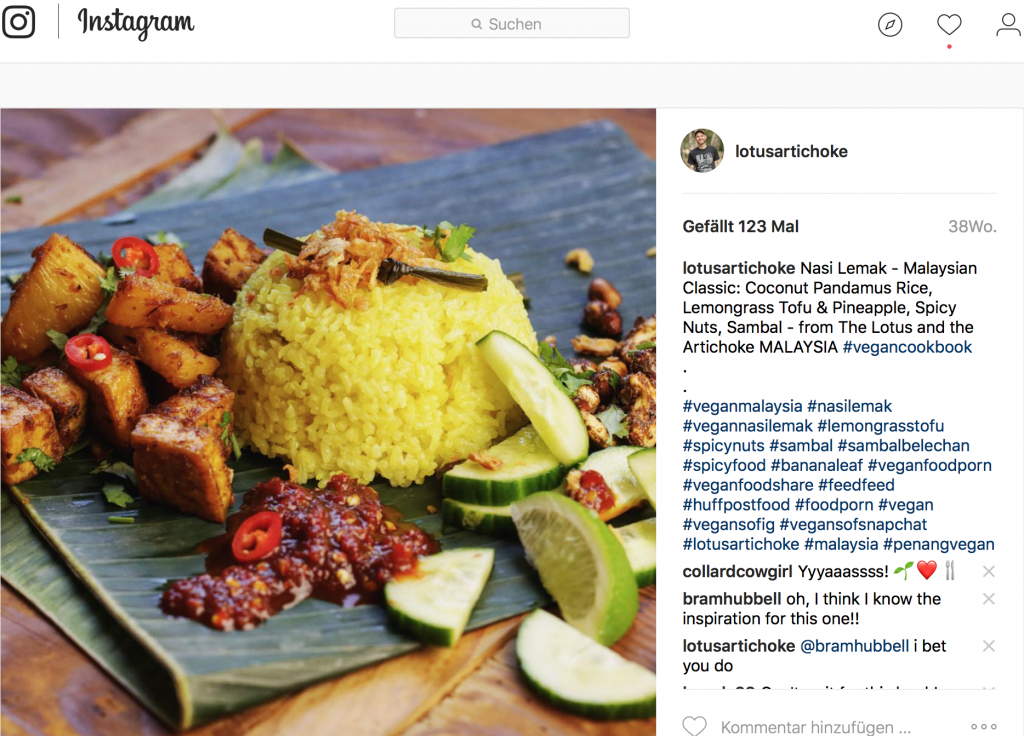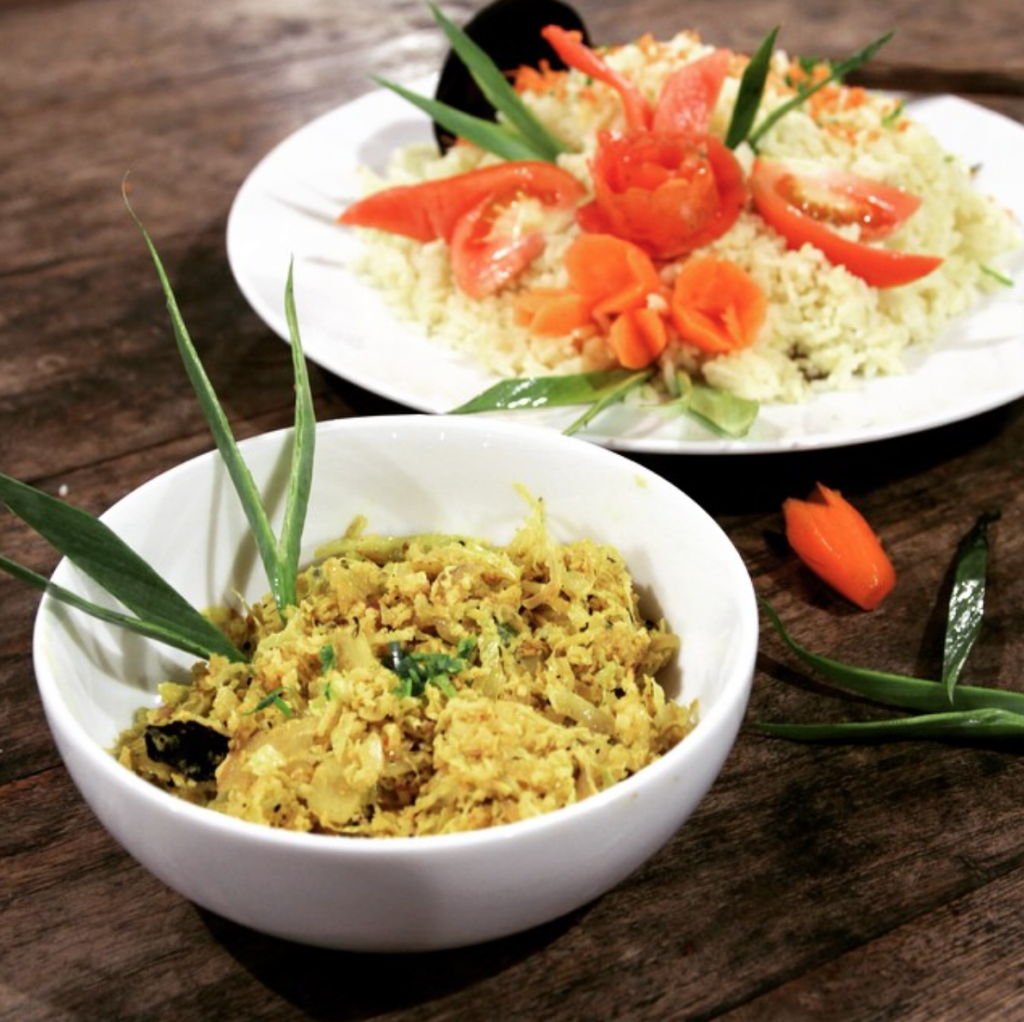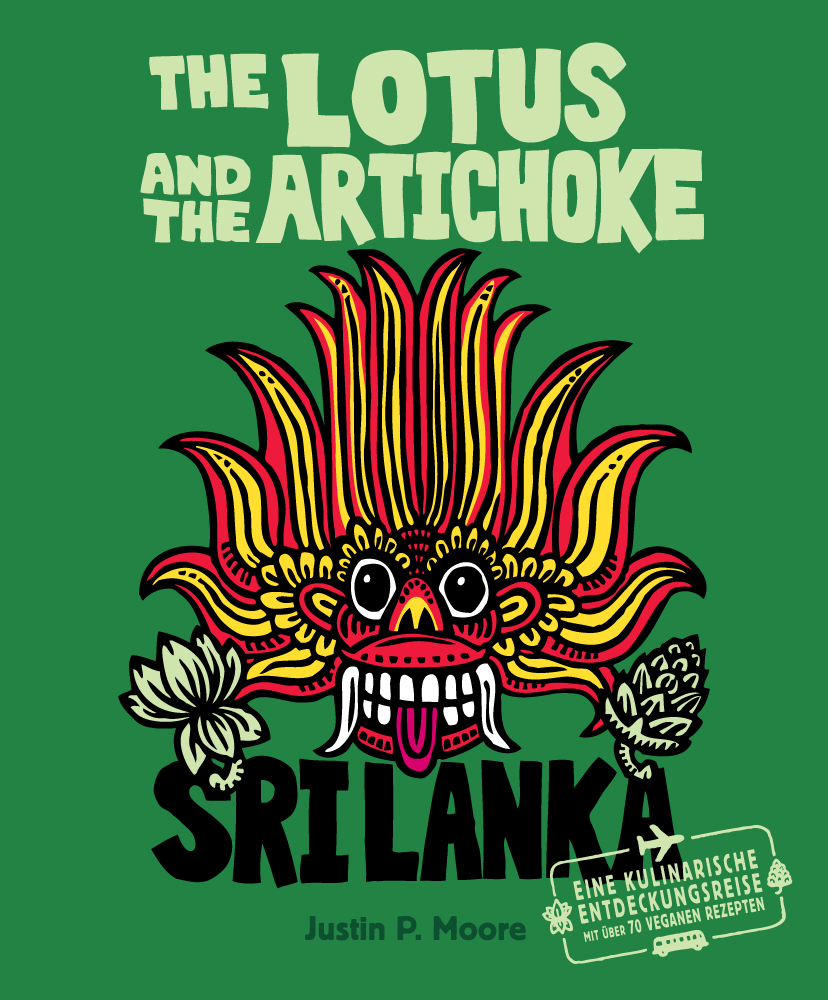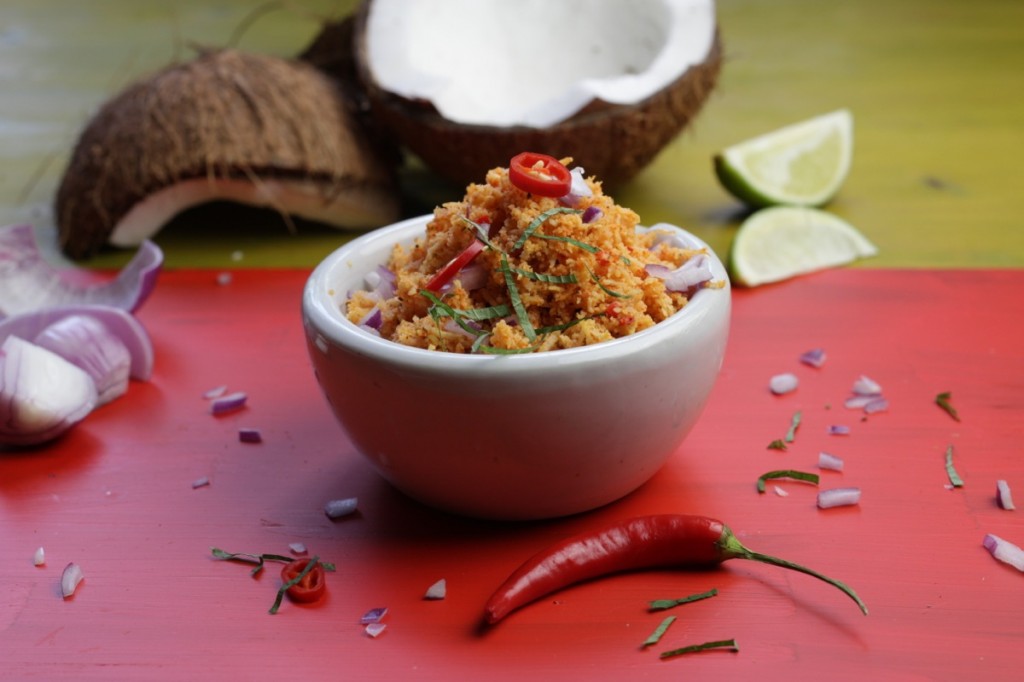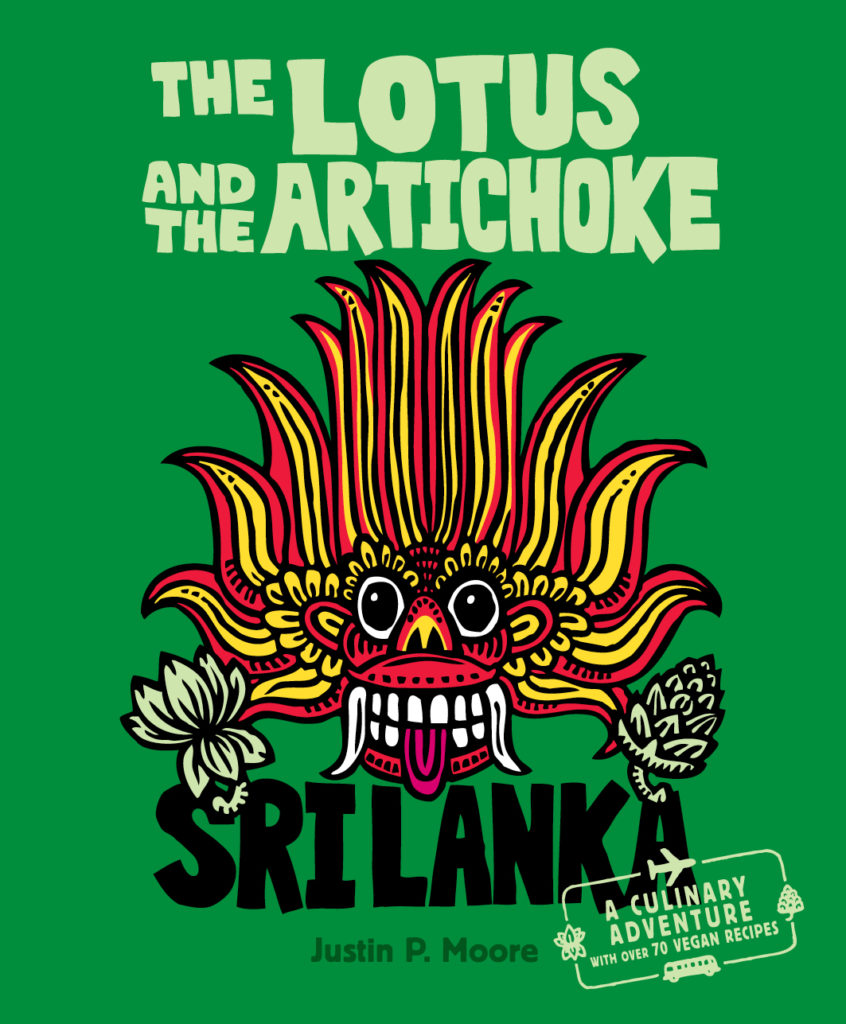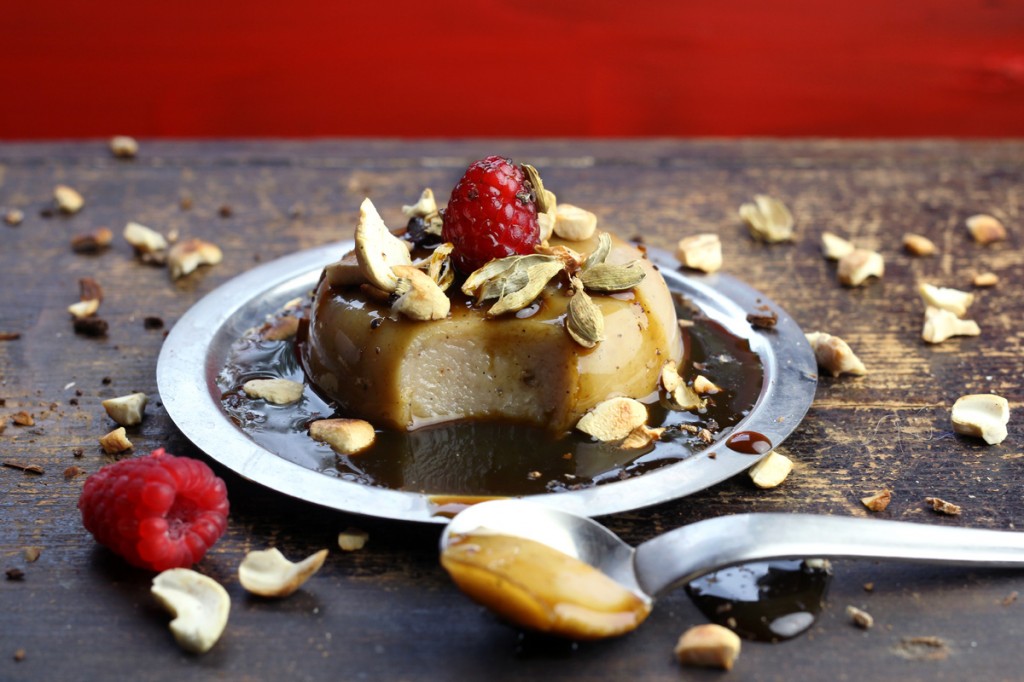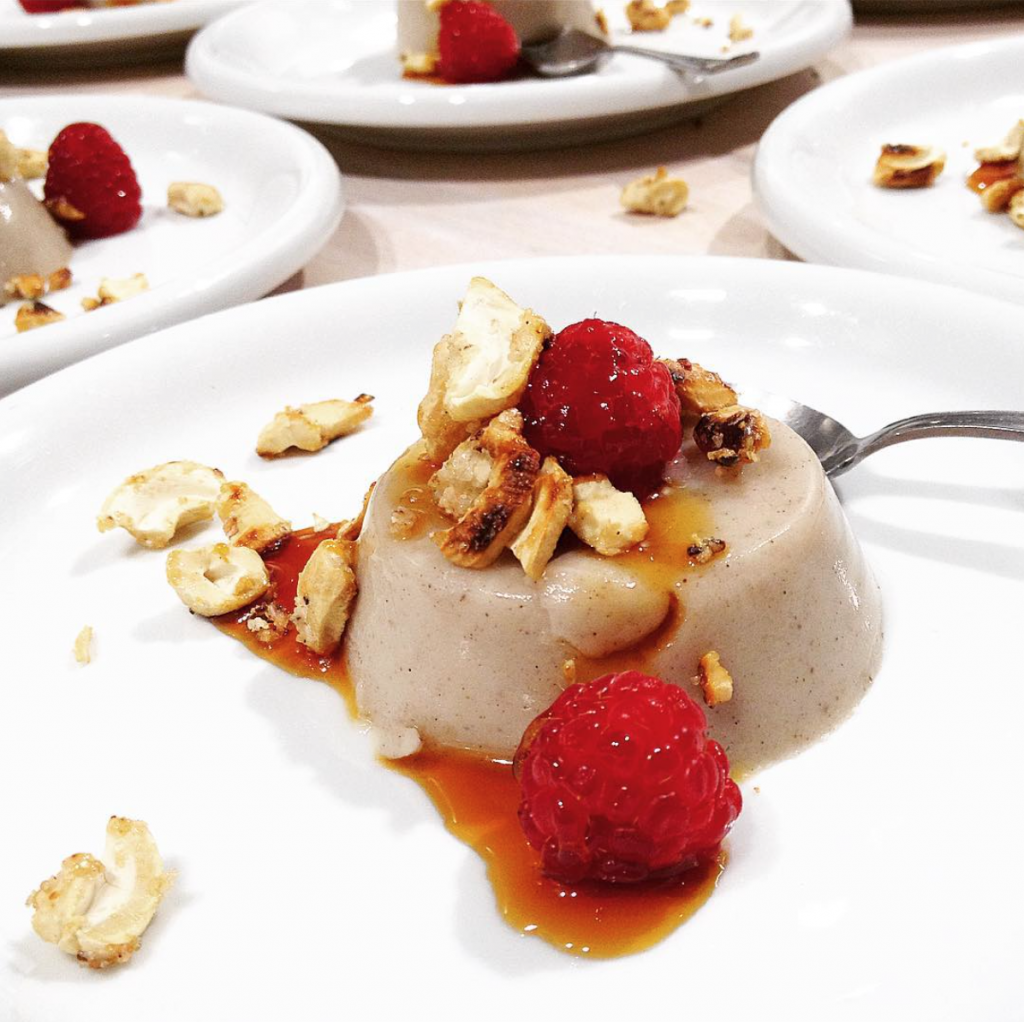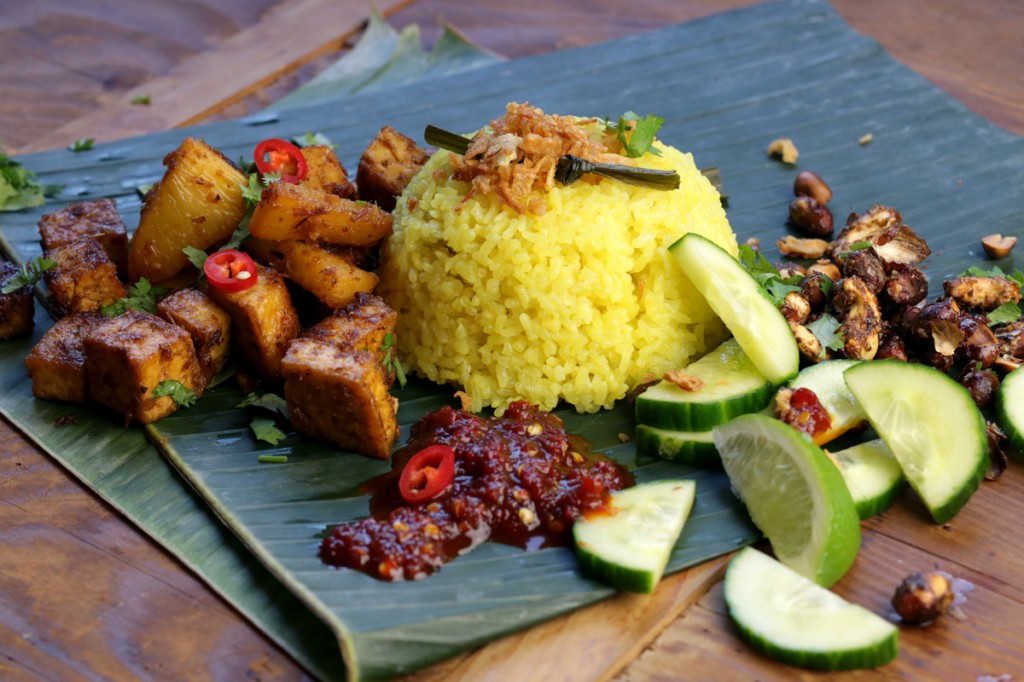
In the five weeks that I spent exploring Malaysia, Singapore, and Borneo there were a few dishes that I just had to try whenever I had the chance.
Nasi Lemak is a national favorite – and one of my favorites, too! The name technically means “fatty rice” but “creamy rice” sounds a least a little bit better. Traditionally, as with this recipe, Nasi Lemak is rice cooked in creamy, coconut milk – often along with fresh herbs and spices such as pandan (which you can replace with bay leaves if that’s what you’ve got.) The bright yellow hue comes from turmeric. Though it’s a breakfast dish, it can be eaten at any time of the day, and many variations cross firmly into Savory Culinary Territory. I eat this all times of the day: Breakfast, Lunch, Dinner, Snack, whatever!
I tried Nasi Lemak in lots of places: Kuala Lampur, Penang, Malacca, and Singapore.
Inspired by those dishes and their accompaniments – and my own imagination, I’ve created a complete meal set: Coconut Pandan Rice served with stir-fried Lemongrass Ginger Tofu, crunchy, charred Spicy Nuts, and a delicious sweet-chili sauce known as Sambal Belacan.
These are actually four different recipes from The Lotus and the Artichoke – MALAYSIA which I’ve put together in this one post. You can of course substitute or simplify the dishes for a less involved meal set designed how you like it. Nasi Lemak is equally awesome even when it’s just served with the fresh cucumber, lime slices, and nuts. I love going all out and doing the Lemongrass Tofu cubes, too. Also, I find the hot, spicy Samabal Belecan completes the dish fantastically.
How to eat it? Mix it up and eat it with your hands!
Serve this meal set up on a banana leaf, wash your hands, mix everything together, and dive in… wild and forkless. (By the way, frozen banana leaves are often available at your local Asian import grocery shop. Just thaw them, rinse them, and eat off of them.) If you prefer a more modern approach: Make it all, arrange it perfectly on plates, eat it with a fork and spoon. It’s up to you!
Nasi Lemak
Malaysian Coconut Pandan Rice with Lemongrass Ginger Tofu, Spicy Nuts & Sambal Belacan
recipes from The Lotus and the Artichoke – MALAYSIA
serves 3 to 4 / time 60 min
Coconut Pandan Rice:
- 2 cups (375 g) broken jasmine rice or basmati rice
- 1 2/3 cup (400 ml) water
- 1 2/3 cup (400 ml) coconut milk
- 1/2 tsp sea salt
- 1/2 tsp turmeric ground
- 2 pandan leaves or bay leaves
- fried onions for garnish
- 1/2 small cucumber sliced
- lime slices for garnish
- Rinse and drain rice thoroughly.
- Bring water and coconut milk to low boil in a medium pot with good lid. Stir in rice, salt, turmeric, and pandan (or bay leaves). Return to simmer. Cover and steam until most liquid is absorbed, 12–15 min. Remove from heat. Stir a few times. Cover and let sit 10 min. Remove and discard leaves before serving.
- Garnish with fried onions, cucumber, and lime slices.
Lemongrass Ginger Tofu:
- 14 oz (400 g) firm tofu cut in cubes or strips
- 1 1/2 cups (200 g) pineapple chopped
- 1 Tbs oil
- 2 shallots finely chopped
- 2 cloves garlic finely chopped
- 2 stalks lemongrass finely chopped
- 3/4 in (2 cm) fresh ginger finely chopped
- 1 tsp coriander ground
- 1 Tbs lime juice or lemon juice
- 1 Tbs soy sauce (Shoyu)
- 1/4 tsp sea salt
- fresh coriander or parsley leaves chopped, for garnish
- Cut tofu in slabs and wrap in clean kitchen towel. Weight with a heavy cutting board and press out extra moisture, 15–20 min. Unwrap and cut in cubes or strips.
- Heat oil in a large frying pan or wok on medium high heat. Add chopped shallots, garlic, lemongrass, ginger, and ground coriander. Fry, stirring constantly, until shallots being to soften and brown, 2–3 min.
- Add tofu cubes. Mix well. Fry, stirring regularly, until tofu cubes are golden brown and crispy on the edges, 5–8 min.
- Add chopped pineapple, lime (or lemon) juice, soy sauce, and salt. Fry, stirring regularly, another 5–10 min. Remove from heat.
Spicy Nuts:
- 1/2 cup (50 g) peanuts
- 1/2 cup (50 g) cashews
- 1/2 tsp chili powder or paprika ground
- 2 tsp coconut sugar
- 1/4 tsp sea salt
- Heat a medium frying pan on medium heat. Dry roast peanuts and cashews, stirring regularly, until light golden brown and dark spots begin to appear, 4–7 min. Do not burn.
- Add chili powder (or paprika), sugar and salt. Mix well. Continue to cook another 2–3 min, stirring constantly, until sugar has melted and nuts are well coated. Remove from heat. Allow to cool.
Sambal Belacan:
- 2–3 Tbs vegetable oil
- 5 large (90 g) red chilies chopped
- 2 cloves garlic chopped
- 1 Tbs soy sauce (Shoyu)
- 1 Tbs rice vinegar
- 1 Tbs lime juice or lemon juice
- 1 Tbs coconut sugar
- 1/4 tsp sea salt
- Blend all ingredients in a small food processor or blender until smooth, adding more oil (or some water) as needed.
- Heat a small frying pan on medium heat. Add blended spice paste to pan and fry, stirring regularly, until sauce darkens, thickens, and oil separates, 8–12 min.

Nasi Lemak
Kokos-Pandanus-Reis mit Zitronengras-Ingwer-Tofu, pikanten Nüssen & Sambal Belacan
Rezepte aus The Lotus and the Artichoke – MALAYSIA
3 bis 4 Portionen / Dauer 60 Min.
Kokos-Pandanus-Reis:
- 2 Tassen (375 g) Bruchreis (Jasmin oder Basmati)
- 1 2/3 Tasse (400 ml) Wasser
- 1 2/3 Tasse (400 ml) Kokosmilch
- 1/2 TL Meersalz
- 1/2 TL Kurkuma gemahlen
- 2 Pandanus- oder Lorbeerblätter
- Röstzwiebeln zum Garnieren
- 1/2 kleine Gurke in Scheiben geschnitten
- Limettenspalten zum Garnieren
- Reis gut spülen und abgießen.
- In einem mittelgroßen Topf mit gut schließendem Deckel Wasser und Kokosmilch zum Köcheln bringen. Reis, Salz, Kurkuma und Pandanus– oder Lorbeerblätter einrühren. Erneut zum Köcheln bringen. Abdecken und 12 bis 15 Min. garen, bis der größte Teil der Flüssigkeit absorbiert ist.
- Vom Herd nehmen. Einige Male umrühren, abdecken und 10 Min. ziehen lassen. Vor dem Servieren die Blätter entfernen.
- Mit Röstzwiebeln, Gurkenscheiben und Limettenspalten garnieren.
Zitronengras-Ingwer-Tofu:
- 400 g fester Tofu in Würfel oder Scheiben geschnitten
- 1 1/2 Tassen (200 g) Ananas gehackt
- 1 EL Pflanzenöl
- 2 Schalotten fein gehackt
- 2 Knoblauchzehen fein gehackt
- 2 Stängel Zitronengras fein gehackt
- 2 cm frischer Ingwer fein gehackt
- 1 TL Koriander gemahlen
- 1 EL Limetten- oder Zitronensaft
- 1 EL Sojasoße (Shoyu)
- 1/4 TL Meersalz
- frisches Koriandergrün oder Petersilie gehackt, zum Garnieren
- Tofu in Platten schneiden und in ein sauberes Geschirrtuch wickeln. 15 bis 20 Min. mit einem schweren Schneidebrett beschweren, um überschüssige Flüssigkeit herauszupressen. Auswickeln und in Würfel oder Scheiben schneiden.
- In einem großen Topf oder einer großen Pfanne Öl auf mittlerer Flamme erhitzen. Schalotten, Knoblauch, Zitronengras und gemahlenen Koriander hineingeben. 2 bis 3 Min. unter ständigem Rühren anbraten, bis die Schalotten weich werden und zu bräunen beginnen.
- Tofuwürfel zugeben und gut umrühren. Unter regelmäßigem Rühren 5 bis 8 Min. braten, bis die Tofuwürfel goldbraun und an den Rändern knusprig sind.
- Gehackte Ananas, Limetten– oder Zitronensaft, Sojasoße und Salz einrühren. Weitere 5 bis 10 Min. unter ständigem Rühren braten. Vom Herd nehmen.
- Mit gehacktem Koriandergrün oder Petersilie garnieren.
Pikante Nüsse:
- 1/2 Tasse (50 g) Erdnüsse
- 1/2 Tasse (50 g) Cashewkerne
- 1/2 TL Chili- oder Paprikapulver
- 2 TL Kokosblütenzucker
- 1/4 TL Meersalz
- Eine mittelgroße Pfanne auf mittlerer Flamme erhitzen. Erdnüsse und Cashewkerne 4 bis 7 Min. darin rösten, bis sie leicht goldbraun sind und sich braune Flecken bilden. Nicht anbrennen lassen.
- Chili– oder Paprikapulver, Zucker und Salz zugeben und gut umrühren. 2 bis 3 weitere Minuten unter ständigem Rühren rösten, bis der Zucker schmilzt und die Nüsse gut mit der Gewürzmischung überzogen sind. Vom Herd nehmen und abkühlen lassen.
Sambal Belacan:
- 2–3 EL Pflanzenöl
- 5 große (90 g) rote Chilischoten gehackt
- 2 Knoblauchzehen gehackt
- 1 EL Sojasoße (Shoyu)
- 1 EL Reisessig
- 1 EL Limetten- oder Zitronensaft
- 1 EL Kokosblütenzucker
- 1/4 TL Meersalz
- Alle Zutaten in einer kleinen Küchenmaschine oder einem kleinen Mixer glatt pürieren. Öl nach und nach je nach Bedarf zugeben (oder mehr Wasser).
- Eine kleine Bratpfanne auf mittlerer Flamme erhitzen. Gewürzpastein die Pfanne geben und 8 bis 12 Min. unter ständigem Rühren reduzieren, bis die Soße dunkel wird, eindickt und das Öl sich trennt.
Vegane Rezepte aus The Lotus and the Artichoke – MALAYSIA



